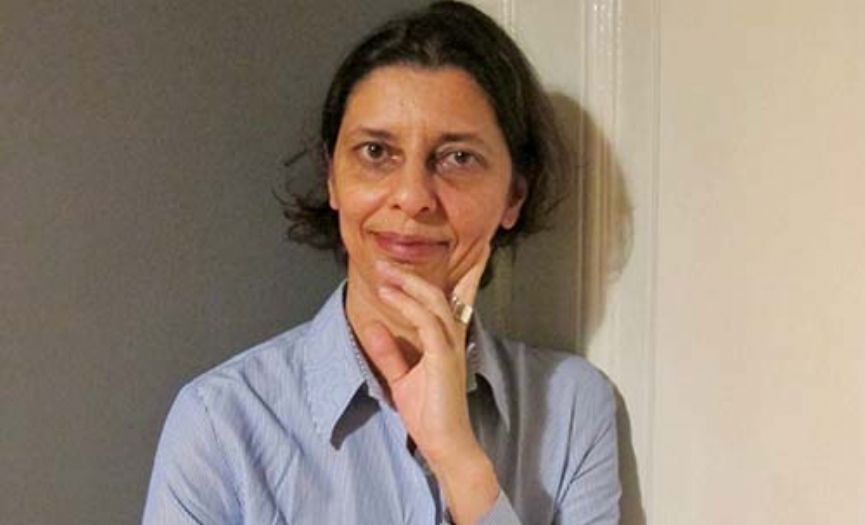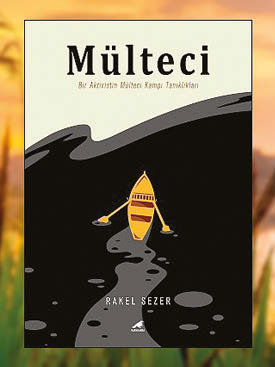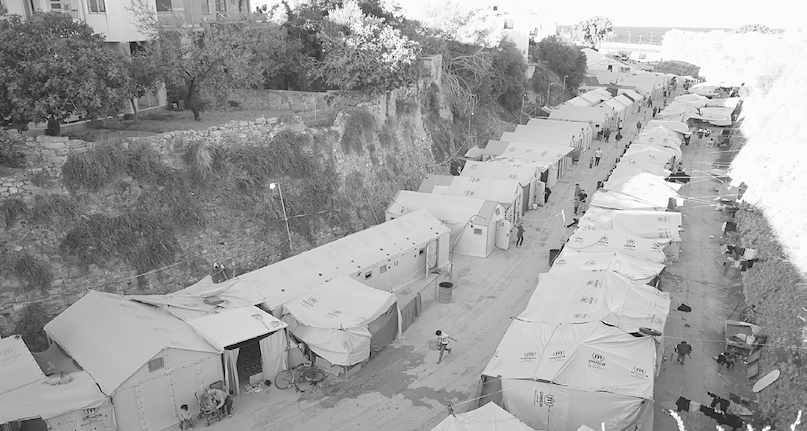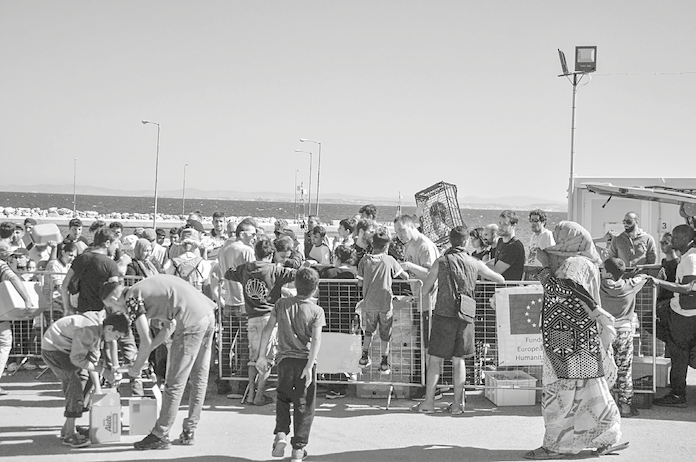
The Story of Refugees as Witnessed by Rakel Sezer
The book ´Refugee: An Activists Testimonies on Refugee Camp´ (in Turkish) written by Rakel Sezer based on her own experiences and her conversations with the refugees whom she assisted, acts as a documentary that will enable us to look at the events with empathy Let us listen to the rest from Rakel Sezer, herself
Translation by Roksi Levent
The refugee issue which has become one of the main problems of Turkey and Europe has unfortunately not been resolved yet… Rakel Sezer who could not stand idly by while this humanitarian plight was going on worked as a volunteer between the years 2016 and 2019 at a non-profit organization that helped refugees who took shelter at camps on Chios. The book “Refugee: An Activist’s Testimonies on Refugee Camp” [in Turkish] written by Sezer which is based on her own experiences and her conversations with the refugees whom she assisted, acts as a documentary that will enable us to look at the events with empathy… Let us listen to the rest from Rakel Sezer, herself…

The novel 'Refugee: An Activist’s Testimonies on Refugee Camp' by Rakel Sezer
First, we would like to know you better… Could you briefly introduce yourself?
I was born in Istanbul in 1972. My interest in humans, evolution, and nature was the reason I studied biology as an undergraduate and environmental sciences as a postgraduate.
How did you decide to write the book?
Soon after I started volunteering at the camp, I started sending Gazete Duvar my articles which contained my impressions, insights, and testimonies on a regular basis. In my articles, I highlighted the refugees' own stories, what they went through until they got here, and the inhumane conditions that they had to put up with in spite of their asylum rights rather than just giving shallow statistical information like local and foreign media usually do. Following my articles being published on Gazete Duvar and my one-to-one conversation with Kutlukhan Perker, the director of KaraKarga Publications, Kutlukhan offered to compile my articles in a book. And I gladly accepted this offer.
THE FIRST VOLUNTEER JOB
Did you have similar experiences before Chios? When did you decide to take action?
I had been going to Chios island for summer vacations for the past 15 years. In 2014, I met Toula, the founder of the local initiative which I worked for between 2016 and 2019.
On October 2015, when the migrant influx to the islands reached its peak, I saw pictures on social media that Toula posted portraying the current situation on the island, the challenges the island people had to overcome, and how challenging it was to help with the situation. When I reached out to her to get further details, I learned that she had founded a local initiative by the name CESRT- Chios Eastern Shore Response Team- and she was trying to reach almost every organization primarily in Europe, looking for people who could work as volunteers or could donate money.
Until March 20, 2016 when Turkey and European Union signed an agreement regarding the refugee issue, every day 500- 1,000 refugees were arriving at Chios alone. The situation on the other islands was no different. Before the agreement, the issue of short-term temporary accommodation for refugees on the islands had turned into a life struggle in inhumane conditions, after crossings to other countries in Europe were halted under the agreement. I started working as a volunteer in this initiative as of September 2016.
CAMPS AND IMMIGRATION
How did the things you encountered and the refugees you connected with affect you, personally? Did it change your views about the world?
The demand to be a refugee is the demand to live humanely and it is the most fundamental right. Many member countries of European Council which had signed the United Nations Convention on Migrants' Rights indirectly caused a humanitarian tragedy in refugee camps in Europe and especially on the Greek islands as a result of several international and economic negotiations rather than making an effort to meet this demand most effectively.
In camp environments where it is difficult to stay even for just 72 hours, refugees are housed for months or even more than a year. This fact affected me the most during my time in the camp. I have witnessed the refugees’ morale and psychology deteriorate every day, parents not being able face their own children. Being around these families, spending time with the children whose parents look at as if they are total strangers, had a significant emotional effect on me.

Photo by Alper Güçlü
Refugees jumping through hoops are throwing themselves onto foreign lands that they see as hope. Can you tell us about their state of mind? What keeps them on their feet?
The thing that kept parents on their feet was their children. When they thought about their homes, their neighborhood, their neighbors and loved ones that they will never be able to see again, they said, “We don’t want our children to go through what we did.” Having spoken with people who had immigrated to Europe in previous years, they were aware that it would be much harder for them than their children to adapt to a foreign country.
For younger people in their 20s, the situation is a little different. They are anxious to start a new life, therefore they follow the asylum request process very closely. Their keen interest in languages, their skills and capabilities, their aspiration to work, the relationship and friendship they build with people coming from other countries give them strength and determination throughout the process.
Children are the most important factor that made me return to camps over and over again. There is no past for them. Every day is a new day and there is only today.
Can you tell us about the refugee profile?
Since October 2015, the influx of refugees from the Turkish coast to the Greek islands has included not only refugees coming from Syria, but also countries such as Iran, Yemen, Afghanistan, Cameroon, Algeria, Egypt, Sudan, Congo, Nigeria, Palestine, Ghana, and Pakistan. The number of people fleeing to the islands from their countries because of civil wars, the extrajudicial executions, rapes, and torture due to their sexual preferences exceeded 100,000.

The queue for food in the camp (Photo by Alper Güçlü)
How was a typical day at the camp? What areas were available to meet people's basic needs?
Three meals at the camp were prepared by international volunteer organizations. Long queues were formed at each meal. As the queues got longer, we realized that the number of people taking shelter at the camp incrementally increased.
As part of our jobs at the local initiative I worked with, we patrolled the island's bays and hills near the shore every night until morning. We were in constant contact with the coast guard. In the dark, it was difficult to spot and track the boats. However, we did not have a minute to lose. When we spotted a boat, we were supposed to track its movement from the land and immediately get to where they docked. We were prepared to meet the refugees with a Basque first responder medical team working with us. In our vehicle, we had clothing for babies and adults as well as snacks and water.
Related Newsss ss








